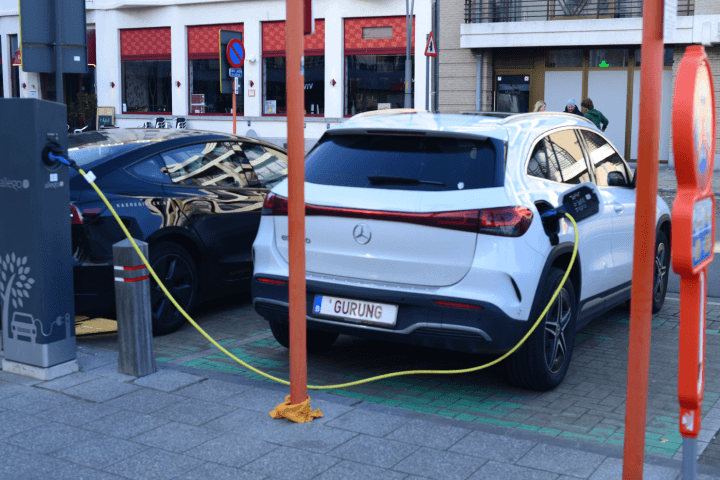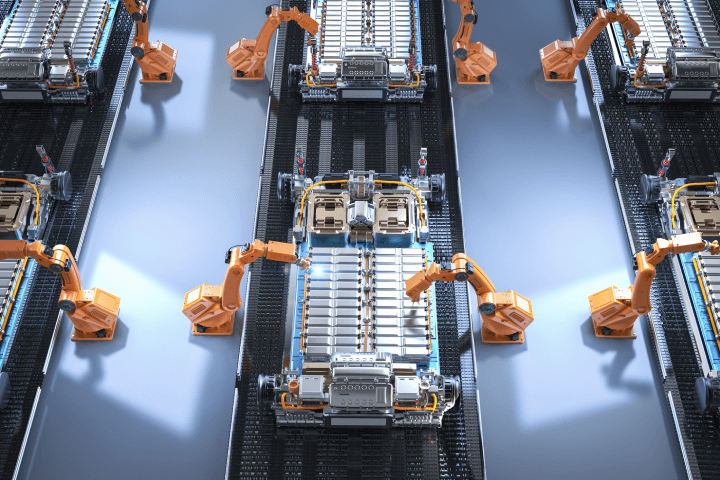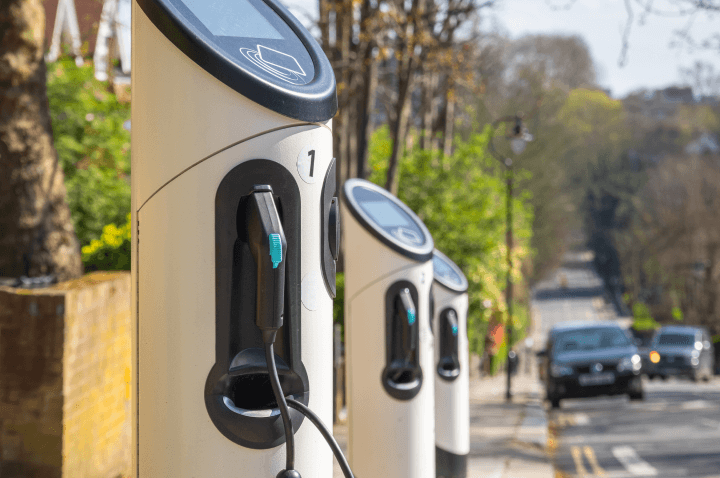Why Charging Electric Vehicles Outside Home is More Expensive
Insights | 15-06-2023 | By Robin Mitchell
For the longest time, those who swear by EVs would argue that they are more cost-effective due to their lower running costs. However, recent reports indicate that changes in electric prices have now made them more expensive to run compared to fossil fuel vehicles when charged outside the home The Guardian.
Despite these challenges, it's important to note that EVs offer numerous benefits. They produce zero tailpipe emissions, reducing air pollution and contributing to better air quality in urban areas. They are also more energy-efficient than conventional vehicles, and as the electricity grid becomes more renewable, the carbon footprint of EVs will continue to decrease. Furthermore, EVs have lower operating costs over time due to less maintenance and lower fuel costs.
What challenges do EVs face, how have recent price increases made them less viable, and how can engineers hope to solve this challenge?
What challenges do EVs face?
While the rollout of Electric Vehicles (EVs) continues, the speed at which they are replacing cars is significantly slower than what many had hoped. Regardless of numerous government intentions to outlaw fossil fuel vehicles by 2030, the many protests from environmentally conscious groups, or the intentions of prominent figures in the tech industry, it seems that most people still prefer to drive petrol-based vehicles. But what factors work against the adoption of EVs that are supposed to change the world for the better?
High EV Costs
By far, the biggest hurdle that EVs currently face is their price, with charging costs at public points soaring to nearly £50, making them more expensive to run than petrol motors The Sun. Simply put, money talks, and when considering that many practical EVs are still well above the £40K mark, most new car owners are either unable to afford this or, for the same price, get a more upmarket vehicle. For example, a new Tesla will cost a UK customer somewhere in the region of £45K to £60K, and while a Tesla is often considered a luxury vehicle, for the same price, one can also purchase a Land Rover Defender, Range Rover, or a Jaguar F-Type.
Thus, the only real incentive for purchasing an EV at this range would be either as a statement of opinion (for the sake of the environment) or for potential fuel savings in the long run. However, considering that those purchasing vehicles at these prices are unlikely going to struggle to pay for fuel, making the cost-saving argument somewhat mute.

In Blankenberge, West-Flanders, Belgium on March 30, 2023, a black Tesla Dual motor car and a Mercedes-Benz hybrid car were spotted at a street recharging station.
In fact, a study published in PubMed found that the cost-effectiveness of EVs can vary significantly depending on the charging infrastructure and electricity pricing.
Despite the high costs of EVs, advancements in battery technology and manufacturing processes are gradually reducing these costs. For instance, the cost of lithium-ion batteries, a significant component of EVs' price, has dropped by nearly 90% over the past decade. Similarly, efforts are underway to develop more sustainable and cost-effective methods of lithium extraction, which could further reduce the cost of EVs and mitigate the environmental impact of their production. As for the charging infrastructure, governments and private companies worldwide are investing heavily in expanding the network of charging stations, making it more convenient to charge EVs.
Production Materials
Another factor that closely relates to the high cost of EVs is the materials needed to manufacture them. Unlike EVs, internal combustion engines (ICEs) are, at their core, a cylinder with a piston that ignites a gas mixture which can be manufactured from many cheap materials such as steel. This makes ICE vehicles very easy to mass-produce and repair, with spare parts often costing very little (of course, not all parts of a vehicle are cheap to replace, such as automatic transmissions).
However, EVs are highly dependent on rare minerals such as Lithium, Platinum, and cobalt. While Lithium is highly abundant in the Earth’s crust, most of this is in compounds that are not economical to extract, which means that there are very few areas where it can be extracted. Furthermore, mines that extract Lithium are highly damaging to both the environment and local populations due to the numerous toxic compounds. Thus, the true cost of EVs is far greater than their immediate price tag.

A conceptual illustration of an automated car factory showcases a robot assembly line with a 3D-rendered platform containing electric car battery cell modules.
Charging locations
While this factor has improved over the past few years, the lack of EV chargers outside the home can often be a deterrence to those looking to get an EV. The cost of charging at home has risen by 43% for some drivers, while the already higher cost of on-the-road recharges has gone up 25% The Guardian. The cost of charging at home has risen by 43% for some drivers, while the already higher cost of on-the-road recharges has gone up 25% The Guardian. Unlike an ICE which can always be refuelled with a jerry can should it run out of fuel, an EV needs an extremely large amount of power to charge, more than what could be provided with a portable power source. Secondly, the numerous amounts of fuel stations also mean that an ICE will always be close to a source of fuel, while EVs are restricted in where they can charge.
But to make matters worse, even if an EV finds a charge point, it can often take a long time to charge. In the time that an ICE owner pulls up to a pump, has the tank completely filled, buys a cheap sandwich from the station’s shop, and drives off, an EV would barely have charged a few percent. As such, EVs are more suited for overnight charging at a home where electric rates are lower, and there is no need to try and quickly charge the vehicle.
As for the charging infrastructure, governments and private companies worldwide are investing heavily in expanding the network of charging stations. These efforts are making it more convenient to charge EVs, both at home and on the road. For instance, several countries have set ambitious targets for the installation of new charging points, and innovative solutions like ultra-fast charging stations and wireless charging technologies are being developed.
 A charging station for electric cars is located on a street in the Crouch End area of London.
A charging station for electric cars is located on a street in the Crouch End area of London.
How have recent price increases made EVs less viable?
If EVs weren’t already faced with a mountain of challenges, the recent increases in energy prices have significantly impacted one of the strongest arguments for EVs; their operational costs. The cost per mile for the electric VW ID.3 is 21.43p — compared to 13.03p for the Golf 1.5L, VW’s petrol equivalent The Sun. A multitude of recent factors, including the Russo-Ukraine war, the COVID pandemic, and inflation, have all seen prices rise, but the effects on gas and electric prices have been significant.
The price of petrol at pumps fluctuates with market changes on a daily basis such that if the price of oil drops on Monday, then buyers can expect petrol prices to also drop within a matter of weeks or days. This means that those purchasing petrol are often at the mercy of rapidly changing markets, such that sudden increases in oil prices are very quickly felt by consumers.
However, in the case of electricity and gas prices, rapid market changes do not have as much of an immediate effect. In the case of the UK, the majority of energy is produced by natural gas, and this gas is generally bought and stored in bulk. Thus, the price of electricity will depend on the price of gas when it was purchased instead of the price of gas on that day.
As such, when UK gas suppliers purchased as much gas as they could during its peak in 2022 (in fear of running out), the cost of electricity from that gas was also substantial and continues to do so to this day. But while this has seen average electric bills more than triple, the cost of charging an EV has also increased, so much so that they are actually more expensive to run per mile than petrol vehicles when not charged at home.
It should be stated clearly that EVs are still cheaper to run than their ICE equivalents, but if and only if they are charged at home during off-peak times. One breakdown comparison published by The Sun shows how a typical EV now costs 21.43p per mile compared to 13.03p for a typical ICE. While fully charging an EV is around 60% of what it costs to fill an ICE, the significantly reduced range results in the need for two charges, thereby making EVs more expensive to run.
How can engineers hope to solve this challenge?
In order to solve this problem, engineers need to address the significant challenge that is the source of energy for EVs. The rising price of EV tariffs means drivers now face paying 43% more than a year ago. This amounts to a rise of about £75 a year for an average vehicle such as a Nissan Leaf or a Renault Zoe The Guardian. Currently, most EVs are dependent on the grid, which sources most of their electricity from non-renewable sources, meaning that not only are they subjected to wild changes in market prices, but they are still damaging to the environment, which makes their green appearance nothing more than a façade.
According to a study published in PubMed, the cost-effectiveness of electric vehicles (EVs) can vary significantly depending on the charging infrastructure and electricity pricing. The study found that with the right battery capacity and charging infrastructure, EVs can be a cost-effective solution to reduce gasoline consumption. This highlights the importance of strategic planning and investment in the development of charging infrastructure and electricity pricing policies to ensure the cost-effectiveness of EVs.
By actively switching natural gas for alternative sources such as solar and wind, it is possible for EVs to not only become cheaper to operate but even potentially recuperate their costs via financial incentives where EVs can opt to provide grid storage during times of peak energy production. Of course, this is far easier said than done, as renewable energy is notorious for its instability, while fossil fuels are excellent for producing consistent and stable energy.
Engineers will also need to approach the issue with fast charging, as simply installing more charge points will only solve half the problem. The fast refiling speeds presented by ICE vehicles make them highly suitable for busy environments where thousands of cars need to pass through quickly. Having a charging station requires cars to be parked even for 30 minutes, is far too long, and will see scalability issues as more users switch over to EVs.
Overall, the very thing that makes EVs run is the very thing holding them back, and unless cheaper charging points can be installed en-masse, the rollout of EVs will only continue to struggle. As a well-known advocate for EVs once said, “It’s financially insane to buy anything other than a Tesla. It’ll be like owning a horse in three years”. Turns out that the faithful ICE still holds strong in the automotive world.
In conclusion
While EVs face significant challenges, they also hold immense potential for transforming our transportation system and reducing its environmental impact. With ongoing advancements in technology and infrastructure, as well as supportive policies and market trends, the future of EVs looks promising. It's a dynamic and rapidly evolving field that warrants close attention in the years to come.
References:
-
Cost of living crisis drives up price of electric car charging. The Guardian. Retrieved June 15, 2023.
-
Recharging electric cars at public points is MORE expensive than some petrol cars. The Sun. Retrieved June 15, 2023.
-
Cost-effectiveness of plug-in hybrid electric vehicle battery capacity and charging infrastructure investment for reducing US gasoline consumption. PubMed. Retrieved June 15, 2023.
-
The impact of electric vehicles on CO2 emissions. PubMed. Retrieved June 15, 2023.

